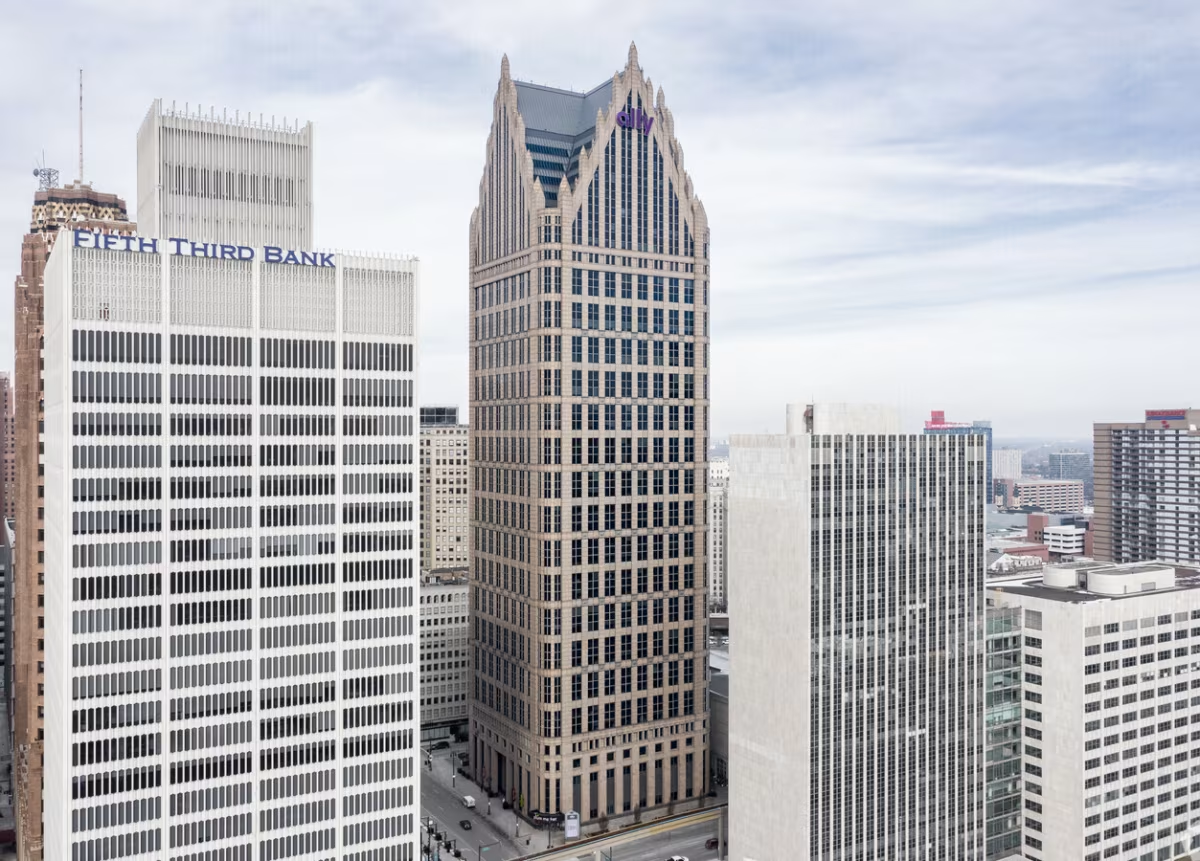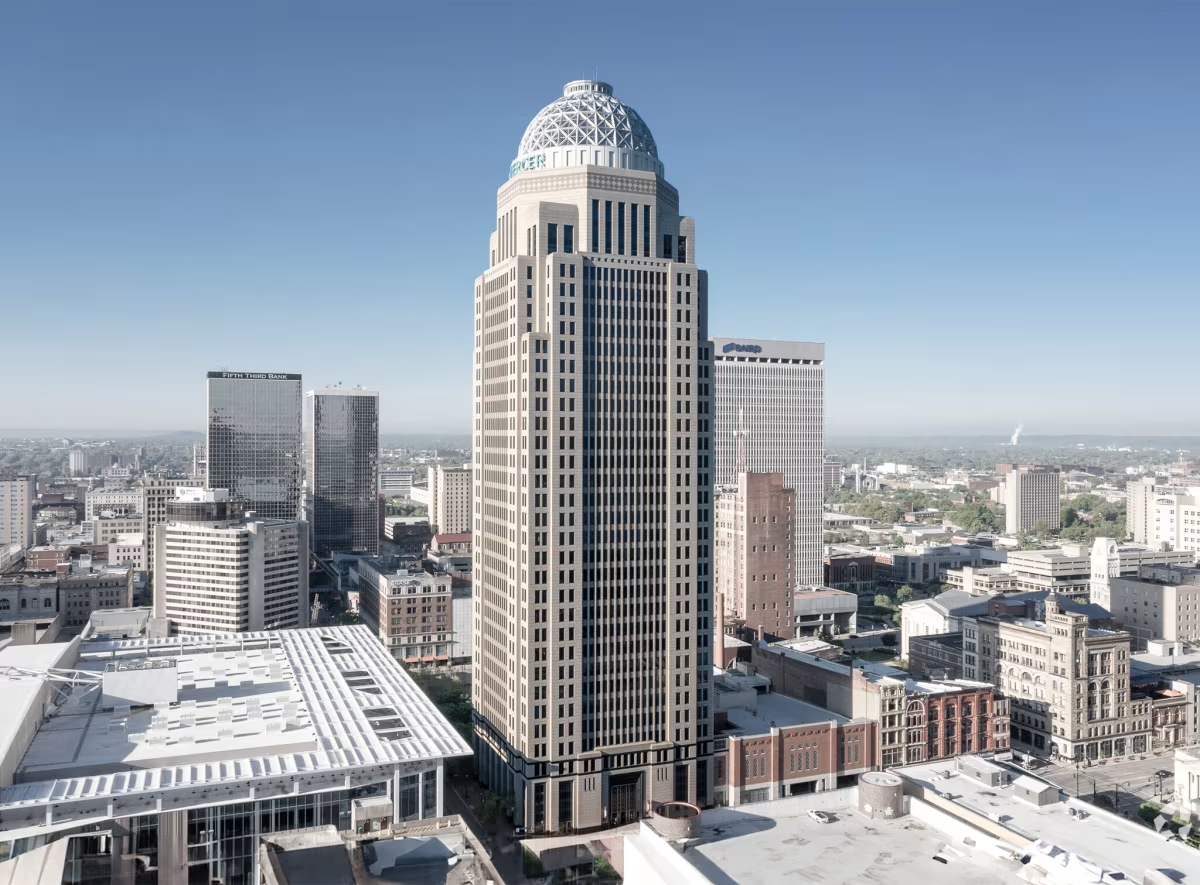Ally Detroit Center vs 400 West Market


Comparing the Ally Detroit Center and the 400 West Market is an interesting exercise, because even though they are located in different cities (Detroit, MI and Louisville, KY), both were designed by Johnson/Burgee Architects and finished within in the same year. This gives us the chance to see how the same architect's ideas were expressed in different urban contexts almost simultaneously.
Height & Size
The Ally Detroit Center is clearly the larger tower of the two, both in terms of height and number of floors. It rises to 607ft (185m) with 43 floors above ground, while the 400 West Market reaches 548ft (167m) with 35 floors above ground.
Of course, each project may have faced different briefs or regulatory constraints, which we don't really know about and could also explain the outcome.
Architectural Style
Both the Ally Detroit Center and the 400 West Market were designed in line with the aesthetic conventions of the Postmodernism style.
Both buildings were completed when the Postmodernism style was already past its peak. This makes them feel like late echoes of the movement, more reflective of continuity or nostalgia than of cutting-edge design at the time.
Uses
Both the Ally Detroit Center and the 400 West Market are primarily commercial towers, serving similar roles in the urban fabric.
Both towers provide significant parking capacity, with Ally Detroit Center offering 2070 spaces and the 400 West Market offering 789.
Structure & Facade
Both towers share the same structural solution, a Frame system.
A frame structure uses a grid of columns and beams to carry the building's loads. This frees the walls from structural duties, allowing for flexible floor plans and larger windows.
However, when it comes to the facade, both buildings use different approaches. The Ally Detroit Center uses a Curtain Wall facade, while the 400 West Market uses a Modular facade.
A Curtain Wall facade like the one seen in the Ally Detroit Center uses a lightweight glass curtain wall hung from the structure, while a modular facade like the one seen in the 400 West Market employs prefabricated panels, often mixing solid surfaces with smaller windows.
| Ally Detroit Center | 400 West Market | |
|---|---|---|
| Johnson/Burgee Architects | Architect | Johnson/Burgee Architects |
| 1991 | Construction Started | 1991 |
| 1993 | Year Completed | 1993 |
| Postmodernism | Architectural Style | Postmodernism |
| Commercial | Current Use | Commercial |
| 43 | Floors Above Ground | 35 |
| 185 m | Height (m) | 167 m |
| Frame | Structure Type | Frame |
| Steel | Vertical Structure Material | Reinforced Concrete |
| Steel And Concrete | Horizontal Structure Material | Steel And Concrete |
| Granite, Glass | Main Facade Material | Glass, Steel, Granite |
| Hines Interests Limited Partnership | Developer | Gerald D. Hines Interests |
| MI | State | KY |
| Detroit | City | Louisville |
| 500 Woodward Avenue | Address | 400 West Market Street |